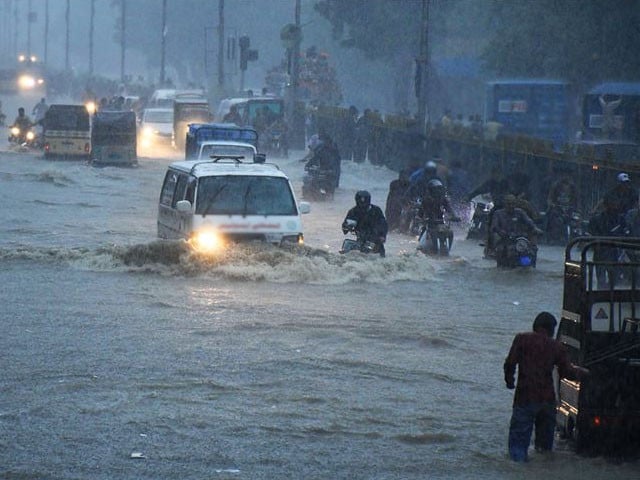National Emergencies Operation Center (NEOC), a unit of the National Disaster Management Authority (NDMA), has issued multiple impact-based weather alerts as the country braces for widespread rain, strong winds, and thunderstorms from June 29 to July 5.
The NEOC warned that heavy rainfall could trigger urban flooding, flash floods, and landslides in several regions, including Kashmir, northeast Punjab, the Potohar region, Islamabad, and upper and central Khyber-Pakhtunkhwa.
“Urban flooding is likely in low-lying areas of Peshawar, Charsadda, Nowshera, Kohat, Rawalpindi, and Islamabad—particularly from 9:00 pm to 4:00 am on June 29,” the alert stated.
نیشنل ایمرجنسیز آپریشن سینٹر کے مطابق
29 جون سے 5 جولائی تک ملک بھر میں شدید مون سون بارشوں اور ممکنہ سیلاب کا خطرہ۔کشمیر گلگت بلتستان، اسلام آباد، پوٹھوہار: ایبٹ آباد، مانسہرہ، ہری پور، بالاکوٹ، مری، گلیات میں موسلادھار بارش، لینڈ سلائیڈنگ اور ندی نالوں میں طغیانی کا خدشہ pic.twitter.com/d8ApdzqOSs
— NDMA PAKISTAN (@ndmapk) June 29, 2025
Rain-related emergencies may also emerge in the districts of Jhelum, Gujranwala, Sialkot, Lahore, and Faisalabad, while significant rainfall in the Sargodha Division may lead to localised flooding.
In northern areas, including Hazara and Malakand divisions in K-P, and the Jhelum and Poonch valleys of Azad Jammu and Kashmir, flash flooding and landslides are possible. NEOC warned of low-level flooding in the River Kabul at Nowshera, as well as medium flows in the Swat River.
Similar risks were identified in tributaries and glacial streams in Chitral and Hunza, including the Khunjerab, Ghujerab, and Braldu rivers. “Transportation in hilly and mountainous areas could be disrupted, along with communication and electricity services,” the statement warned.
Read More: Karachi cools down as first spell of monsoon rains hits city
Heavy to very heavy rainfall is also forecast for southern Sindh, particularly Hyderabad, Thatta, Badin, and Karachi, where the risk of urban flooding is expected to rise sharply from July 2 onward.
NDMA has called on all provincial and district administrations to remain on high alert, activate contingency plans, and ensure warnings are communicated in local languages.
“Citizens are urged to stay informed through official advisories, avoid travelling near rivers and glacial streams, and keep emergency supplies ready,” it added. It also encouraged the public to download the Pak NDMA Disaster Alert App for real-time updates.




